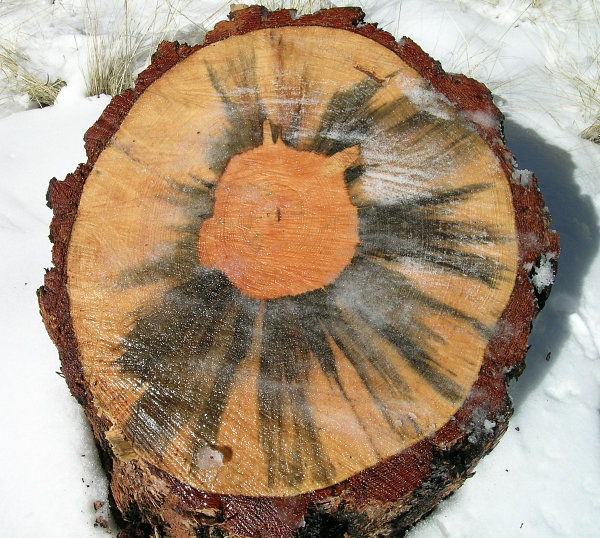Team:British Columbia/Abstract
From 2011.igem.org
| Line 1: | Line 1: | ||
{{Template:Template_HD_1}} | {{Template:Template_HD_1}} | ||
| - | <html><img src="http://upload.wikimedia.org/wikipedia/commons/5/5e/Mt_Fraser_-_Pine_Beetle_Damage.JPG" | + | <html><img src="http://upload.wikimedia.org/wikipedia/commons/5/5e/Mt_Fraser_-_Pine_Beetle_Damage.JPG" height=180px> |
| + | <img src="http://upload.wikimedia.org/wikipedia/commons/a/a9/Pine_shoot_beetle.jpg" height=180px> | ||
| + | <img src="http://upload.wikimedia.org/wikipedia/commons/b/b9/Blue_stain_fungus_01.jpg" height=180px> | ||
| + | <p><font size=1>From left to right: a view from Mount Fraser of dying pine trees turning red, a pine beetle, the effects of the bluestain fungus on a pine tree.</font></p> | ||
| + | </html> | ||
| - | In nature, monoterpenes are synthesized and secreted by trees as a defense against invading beetles and fungi. In one case, the bluestain fungus and mountain pine beetle are in a symbiotic relationship where the fungus deactivates toxic terpenoids and enables the survival of the beetle, which in turn facilitates the spread of the fungus from tree to tree. | + | In nature, monoterpenes are synthesized and secreted by trees as a defense against invading beetles and fungi. In one case, the bluestain fungus and mountain pine beetle are in a symbiotic relationship where the fungus deactivates toxic terpenoids and enables the survival of the beetle, which in turn facilitates the spread of the fungus from tree to tree. Meanwhile, from an industrial point of view, various monoterpenes are involved in the production of pharmaceuticals, flavours/fragrances and biofuels. |
The 2011 UBC iGEM team aims to address both aspects by engineering yeast that produce monoterpenes with high yield at low cost, which may also help in the identification of anti-fungal monoterpenes. To do this, we will introduce genes that gear yeast metabolism toward optimal monoterpene production. We envision that further studies arising from this project may be utilized to find solutions to the pine beetle epidemic. | The 2011 UBC iGEM team aims to address both aspects by engineering yeast that produce monoterpenes with high yield at low cost, which may also help in the identification of anti-fungal monoterpenes. To do this, we will introduce genes that gear yeast metabolism toward optimal monoterpene production. We envision that further studies arising from this project may be utilized to find solutions to the pine beetle epidemic. | ||
Revision as of 18:40, 3 August 2011



From left to right: a view from Mount Fraser of dying pine trees turning red, a pine beetle, the effects of the bluestain fungus on a pine tree.
In nature, monoterpenes are synthesized and secreted by trees as a defense against invading beetles and fungi. In one case, the bluestain fungus and mountain pine beetle are in a symbiotic relationship where the fungus deactivates toxic terpenoids and enables the survival of the beetle, which in turn facilitates the spread of the fungus from tree to tree. Meanwhile, from an industrial point of view, various monoterpenes are involved in the production of pharmaceuticals, flavours/fragrances and biofuels.
The 2011 UBC iGEM team aims to address both aspects by engineering yeast that produce monoterpenes with high yield at low cost, which may also help in the identification of anti-fungal monoterpenes. To do this, we will introduce genes that gear yeast metabolism toward optimal monoterpene production. We envision that further studies arising from this project may be utilized to find solutions to the pine beetle epidemic.
 "
"